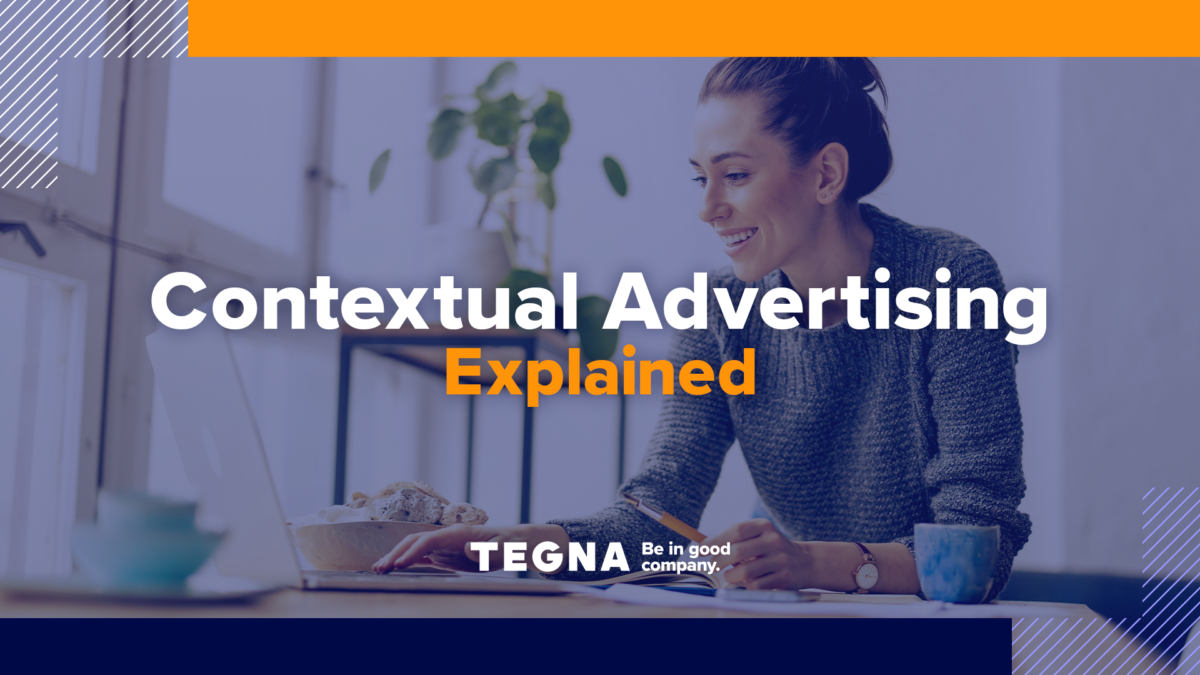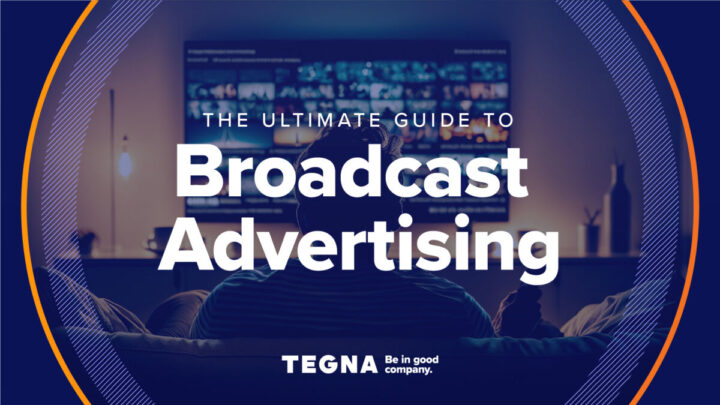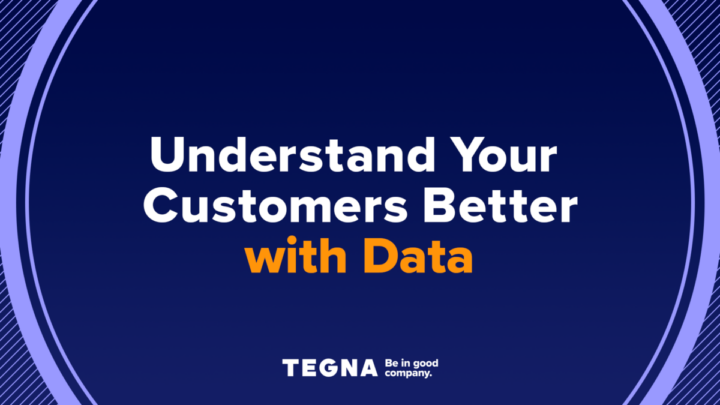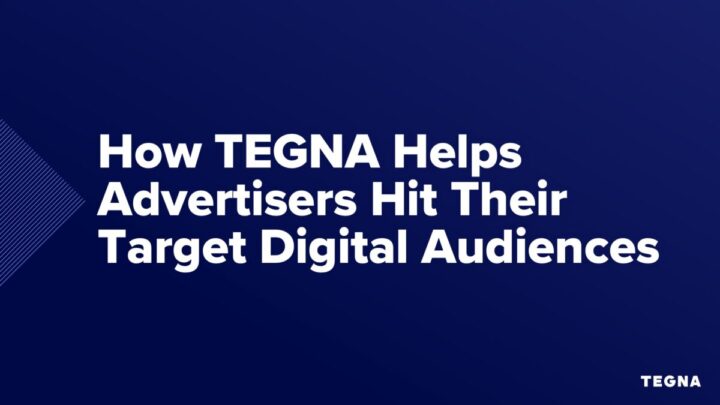What is Contextual Advertising & Why It Matters

What is contextual advertising, and does it make sense for your brand’s marketing strategy?
In elementary school, you learned the importance of context clues – hints throughout a sentence or paragraph to help you understand a word or phrase you don’t know. Contextual advertising is similar in that it uses context clues from a website to deliver relevant advertising to an interested and engaged audience to increase engagement and purchase.
But contextual advertising can quickly become nuanced. What audiences should your brand target? How do you know what websites to align with? How much does it cost? How does it work? What are best practice tips? How do you get started?
Let’s find out.
An Overview of Contextual Advertising
Contextual advertising is targeted advertising that delivers relevant ads to users based on the content they are currently viewing and focuses on the immediate actions of the user’s online activity. For example, if you’re reading an article about popular travel destinations and see a display ad for flights, hotels, or vacation packages, you’ve been served contextual advertising.
By aligning with a user’s interests and immediate online needs, contextual advertising aims to increase the likelihood that a user will be engaged in the content, interested in the ad, click on it, make a purchase, or complete the desired call to action.
Contextual advertising is used by advertisers for a few reasons:
- The advertiser has a perceived notion of audience demographics reading the content – aka finance content is heavily consumed by more affluent individuals.
- The content indicates a buying behavior – a consumer reading about mattresses is likely in-market to buy a mattress.
- Brand affinity towards a subject – aka a beer brand that wants to be associated with sports.
- Brand safety – a brand that has sensitivities to what content is suitable for their brand to be adjacent to. Contextual targeting allows them to control the alignment.
Contextual advertising is also a great digital complement to effective broadcast and streaming TV campaigns. TV and streaming advertising often rely on demographic targeting, which can be broad and reach a wide audience. Contextual advertising allows for more precise targeting and retargeting. It’s cost-effective, and with a consistent message across platforms, brands can increase brand awareness, ad recall, engage users, and reinforce messaging to viewers.
What is a Contextual Targeting Strategy?
There are two traditional strategies behind contextual targeting. When choosing which content you want your ad to be adjacent to, the choice is either done in categories (furniture) or by keyword present within the article (mattresses).
With the deprecation of cookies ahead of us, contextual advertising is being used more heavily to create audience segments and to continue to serve ads to those consumers based on previous behavior. For instance, let’s say a consumer previously viewed content on mattresses. We can then determine that they are in the market to buy a mattress, and we will continue to serve ads to that consumer no matter what content they are currently viewing is related to mattresses or not.
How Contextual Targeting Works
Contextual advertising involves a brand, a digital publisher, and a contextual management platform working together to achieve the basic goal of marketing: reaching the right people, at the right time, with the right message to encourage a desired action.
However, there are a few steps to take before automated systems can take over. These steps include categorizing content, creating audiences, and creating audience segments.
Categorizing Content
Digital publishers categorize their content using specific taxonomies. Most publishers have their own taxonomy, such as TEGNA has S.S.T.S. (Subject > SubSubject > Topic > SubTopic) that each piece of our content is categorized with. An example would be Sports > NFL > Dallas Cowboys > Cowboys vs. Titans Game this weekend.
However, the IAB also created an industry-standard called the IAB Content Taxonomy. This creates a standard in which all publishers may categorize their content, passing those signals to the buying platforms so that buyers may confidently place their ads adjacent to the content they desire.
Seller Defined Audiences
Next, publishers with first-party platforms (such as TEGNA AudienceOne) will create Seller Defined Audiences (SDA). These use previous consumer behaviors to create audience segments. At TEGNA, we note what content our consumers have viewed and make a probabilistic decision on that consumer being in an audience (i.e., in-market to buy a mattress)
Creating Audience Segments
Lastly, keyword contextual uses signals collected from third-party systems to create audience segments based on the keywords used in content that was previously or is currently being consumed. This type of contextual keyword is typically performed on the buy-side by a DSP. However, it is becoming more popular with publishers with their own first-party platforms.
Ad Delivery
When ads are delivered to a user’s browser, they are displayed in various formats. These include native advertising, display, advertising, programmatic, and in-video advertising.
Measurement and Optimization
Advertisers can track the performance of the delivered ads, including metrics like impressions, clicks, conversions, and engagement rates. You can use this data to analyze and evaluate your campaign’s effectiveness with a tool like TEGNA Attribution and make informed decisions regarding future ad selection and optimization.
4 Benefits of Contextual Advertising
Contextual advertising has several benefits, making it a valuable tool for reaching the right audience, driving engagement, and achieving advertising goals.
1. Respect User Privacy While Building Trust
Consumers are more focused on privacy than ever before. While consumers are willing to share their data with companies for a better customer experience, they also have concerns. Recent studies have found:
- 72% of Americans are either extremely or very concerned about online privacy.
- 63% of consumers say companies aren’t transparent about how their data is used.
- 54% say companies use the information to offer consumers no benefits.
- 48% have stopped buying from a brand or using a service due to privacy concerns.
With contextual advertising, ad selection and delivery are primarily based on analyzing the viewed content and do not involve personal data targeting (that’s behavioral advertising, more on that below). This approach aims to provide a more privacy-friendly advertising experience while delivering relevant ads to users.
2. Target the Right Audience in a Cookieless Environment
As audience targeting and measurement technology phases out third-party cookies, first-party data is in the front seat as consumers demand more privacy-centric solutions. With first-party data collected directly from your website and customer interactions, you’ll have great data at your fingertips for:
- Audience Segmentation: Segment your audience based on demographics, browsing behavior, purchase history, and preferences. This segmentation helps you understand your audience better and tailor your campaigns to specific customer segments.
- Content Optimization: By analyzing user behavior on your website or app, you can identify the topics, keywords, or pages most frequently visited or engaged with. Optimize your strategy by aligning ads with content most likely to capture your audience’s attention.
- Custom Contextual Targeting: You can define contextual triggers beyond general keywords and incorporate data from your CRM system or customer profiles. This level of customization enables you to deliver highly relevant ads tailored to individual users’ interests and preferences.
3. Promote Ads in a Brand-Safe Environment
Contextual advertising ensures brand safety by giving advertisers greater control over ad location. When working with your media partner, define specific keywords, topics, or categories that align with your brand values and content guidelines. You can filter out irrelevant or harmful content categories and exclude negative keywords. This added relevance minimizes the risk of ads appearing alongside irrelevant or potentially dangerous content, safeguarding your brand’s reputation.
Contextual advertising platforms also include brand safety monitoring tools that can help identify questionable content and help protect your brand.
4. Create More Relevant & Personal Ads to Increase ROI
McKinsey found that 71% of consumers expect companies to deliver personalized interactions, and 76% get frustrated when this doesn’t happen. Leveraging first-party data in contextual advertising lets you personalize ads and provide relevant experiences for your audience. This personalization increases the chances of user engagement, click-through rates, and conversion.
Behavioral vs. Contextual Advertising
Behavioral and contextual advertising are two approaches used in online advertising to target and deliver relevant ads to users. While the goal of both types of targeting is the same, the tactics and benefits differ.
| Contextual Advertising | Behavioral Advertising | |
| Definition | Analyzes a webpage’s keywords, topics, or themes to understand its content and context. | Collects and analyzes personal user data to understand a user’s interests, preferences, and behaviors. |
| Advertiser Action | Advertisers select ads that are relevant to that content and display them on the page. | Advertisers create user profiles and target specific individuals based on past behavior, such as browsing history, search queries, purchase history, and online interactions. |
| Example | A user will see advertising for hiking boots or outdoor equipment while on a website about popular hiking destinations across the country. | If a user searches for hiking gear online, they may start seeing ads for hiking boots or outdoor equipment on other websites they visit. |
| Targeting | Advertisers target audiences based on contextual signals of a web page: keywords and topics of the website. | Advertisers target audiences based on user data, such as clicks or adding items to a shopping cart. |
| Data Collected | is Content-driven and does not rely on individual user data. | A user’s browsing history, search queries, purchase history, and online interactions. This can include:
● IP address and geolocation ● Pages & products ● Duration of visit ● Clicks ● Recency of visit ● Previous purchases ● Demographics ● Content read ● Sections of the page regularly visited by a user ● Searches within site ● Websites they’ve visited
|
| Tracking | N/A | Cookies, tracking pixels, and other tracking mechanisms. |
| Ad Types | Display, social media, native advertising, search, in-video, programmatic | Display, social media, native advertising, search, in-video, programmatic |
| Main Benefit | User Privacy | Personalization |
Challenges in Contextual Marketing
Despite its advantages, contextual marketing faces several challenges. Some common challenges associated with contextual marketing are:
- Incorrect Targeting Parameters: Algorithms must accurately identify the content’s meaning, nuances, and intent to deliver relevant ads. Inaccurate content and context interpretation can result in irrelevant or misplaced ads and a poor user experience.
- Showcasing Content on Less Reputable Publishers: Advertisers need to implement robust brand safety measures to ensure their ads are not associated with undesirable content. This requires ongoing monitoring, filtering, and the ability to respond quickly to any brand safety concerns.
- Limited Data Insight: Contextual marketing doesn’t rely on individual user data, which means advertisers have limited insights into the specific interests, preferences, and behaviors of the users they are targeting. This lack of granular data can make it challenging to fine-tune ad targeting and optimize campaigns for specific audience segments. However, this is where using first-party data becomes even more important.
- Ad Blocking: With the rise in ad-blocking technologies and increasing privacy concerns, users may choose to block or limit the display of ads.
- Multilingual and Multicultural Challenges: Different languages, cultural nuances, and regional variations can affect the accuracy and relevance of contextual targeting.
Overcoming these challenges requires continuous monitoring, refining algorithms, leveraging machine learning, staying updated with content trends, and applying ethical and privacy-centric practices to ensure the effectiveness and relevance of contextual marketing campaigns.
Ready to try Contextual Advertising? Partner with TEGNA Today!
Advertising partners face new challenges in reaching valuable target audiences. With a promise to provide audiences as diverse as the communities we serve, TEGNA AudienceOne is among the only first-party audience targeting tools in the local media industry that combine demographic and contextual data to enable our partners to reach target audiences with confidence and scale. Sound Good? Let’s get in touch.
Frequently Asked Questions
How do brands advertise in a cookieless environment?
The industry’s move away from third-party cookies is an opportunity to innovate digital advertising using first-party data. It’s collected, with consent, from a customer’s activity on a brand’s website, apps, emails, and loyalty programs. It can include demographic or location information and your interest in specific products or content. These insights can then be used to inform contextual advertising campaigns and deliver relevant ads to interested audiences.
Why is contextual advertising effective?
Contextual advertising offers a brand-safe way to target audiences with relevant advertising based on the content they are currently viewing. By aligning with a user’s interests and immediate online needs, contextual advertising aims to increase the likelihood that a user will be engaged in the content, interested in the ad, click on it, make a purchase, or complete the desired call to action. As a result, brands can see increased user engagement, click-through rates, and conversions.
What is contextual targeting in display advertising?
Contextual advertising uses automated ad platforms to analyze a website’s content. It will place relevant ads on that site to reach a targeted audience via display advertising, banner ads, native advertising, and programmatic. For example, if you’re reading an article about popular travel destinations and see a display ad for flights, hotels, or vacation packages, you’ve been served contextual advertising.
What information does contextual advertising use to target audiences?
First, advertisers will provide specific contexts to the ad platform for displaying their ads. These contexts include specific topics, themes, or keywords relevant to your brand and target audience. Next, an automated ad platform will employ several techniques to analyze the context of a webpage (subject matter, topic, theme, keywords). This analysis helps determine the most appropriate categories and themes for ad targeting.
Why does relevance matter in advertising?
Don’t waste ad dollars targeting the wrong audience with the wrong creative. McKinsey found that 71% of consumers expect companies to deliver personalized interactions, and 76% get frustrated when this doesn’t happen. Leveraging first-party data in contextual advertising lets you personalize ads and provide relevant experiences for your audience. This personalization increases the chances of user engagement, click-through rates, and conversion.




















